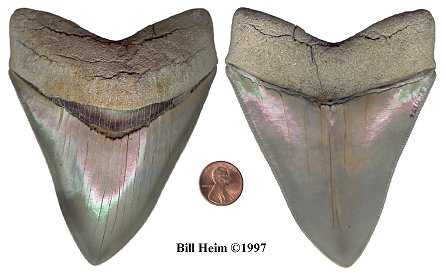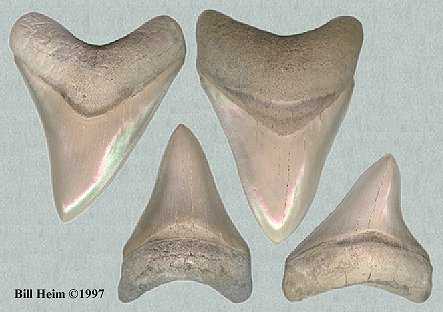No teeth arouse the interest of Aurora collectors more than the giant fossils
left behind by the earth's greatest selachian preditor -- the megatoothed sharks
of the genus Carcharocles (aka Carcharodon). For information on the genus see —
Carcharocles.
C. megalodon (AGASSIZ, 1837)
Having produced the largest (over 6 inches) teeth of any shark, it is no wonder that more
collectors pursue this fossil than any other at Aurora. Its presence in the mine's Yorktown
formation explains the popularity of these tailings. There's a story of a novice collector
asking an old timer the easiest way to find the Yorktown Formation. His response was,
"right after the next hurricane, enter the mine at night with a flashlight, when you see footprints,
you're in the Yorktown".
The below specimen was found near the bus at the end of an otherwise poor collecting day.
 |
Fig. 2 C. megalodon - lingual (left) and labial (right)
Lee Creek — Yorktown Formation |
 |
Fig. 3 C. megalodon
Upper lateral, upper anterior, lower anterior and lower posterior.
All teeth from the Yorktown except the lower anterior which is
possibly from the upper Pungo.
Largest tooth is 101 mm in slant height
Lee Creek — Yorktown Formation |